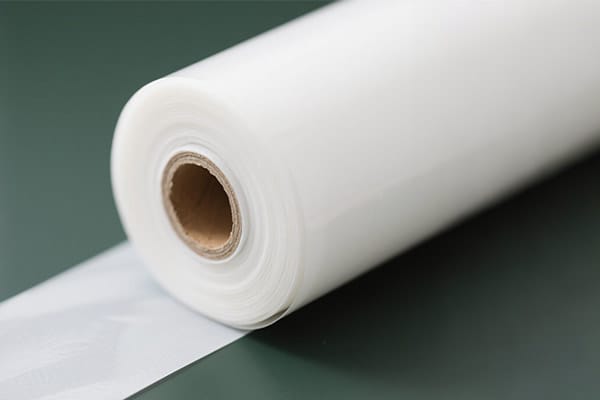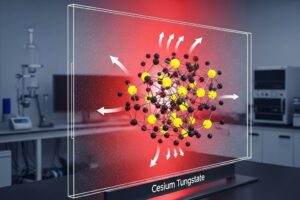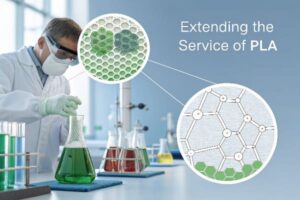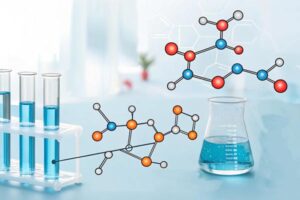<!-- wp:paragraph --> <p>The global PV industry is expanding rapidly and improving the reliability and performance of the solar modules has now become a strategic priority. Potentially Induced Decay is one of the biggest challenges to solar module durability. This phenomenon can reduce solar panel power over time in environments with high voltage, humidity, and temperature.</p> <!-- /wp:paragraph -->
<!-- wp:paragraph --> <p><strong><a href="https://carbodiimide.com/product/anti-pid-eva-masterbatch/">Anti PID additives</a></strong> are a solution that is targeted and effective. How do these additives differ from <strong>conventional additives</strong> that are used in encapsulant material like EVA (Ethylene Vinyl Acetate) or POE (Polyolefin Elastomer), for example? Understanding this difference is important for R&D engineers and procurement teams. It can also have a direct impact on product quality, cost efficiency and brand reputation.</p> <!-- /wp:paragraph -->
<!-- wp:heading --> <h2 class="wp-block-heading"><strong>What is PID? Why are anti-PID additives needed?</strong><strong></strong></h2> <!-- /wp:heading -->
<!-- wp:paragraph --> <p>Under the influence of the system voltage bias, sodium (Na+ ions) from the cell or glass contacts migrate towards the solar cell. This ion motion leads to an accumulation of surface charges, reduced shunt resistence, and a drop in module output. Modules that operate in humid or tropical conditions are especially vulnerable.</p> <!-- /wp:paragraph -->
<!-- wp:paragraph --> <p><strong>Anti PID additives</strong> is a chemically engineered compound that can be added to encapsulants in order to prevent or mitigate this ion movement. These additives enhance the encapsulant’s <strong>electrical isolation</strong> <strong>ion blocking ability</strong> and <strong>water resistance</strong>. They provide an essential barrier to the root causes of the PID.</p> <!-- /wp:paragraph -->
<!-- wp:heading --> <h2 class="wp-block-heading"><strong>Anti-PID additives vs. Additives Conventional: Three Key Differences</strong><strong></strong></h2> <!-- /wp:heading -->
<!-- wp:heading {"level":3} --> <h3 class="wp-block-heading"><strong>1. </strong><strong> </strong><strong>Functional Purpose</strong><strong></strong></h3> <!-- /wp:heading -->
<!-- wp:paragraph --> <p><strong>Conventional additives</strong> are designed to improve processing stability, UV resistance, mechanical durability, or crosslinking behavior. They are primarily chemical or physical in nature, but their role is not directly related to electrical properties.</p> <!-- /wp:paragraph -->
<!-- wp:paragraph --> <p>Electrically Functional are <strong>Anti PID Additives</strong>. They are primarily used to prevent ion transfer and suppress leakage under high voltage. They are therefore essential to electrical reliability and power retention over the long term.</p> <!-- /wp:paragraph -->
<!-- wp:heading {"level":3} --> <h3 class="wp-block-heading"><strong>2. </strong><strong>Impact on Module performance</strong><strong></strong></h3> <!-- /wp:heading -->
<!-- wp:paragraph --> <p><strong>Conventional additives</strong> maintain the film's structural and optical properties while laminating and field-exposing. They do not stop the performance degradation caused by electrical stress.</p> <!-- /wp:paragraph -->
<!-- wp:paragraph --> <p><strong>Anti PID Additives</strong> have shown dramatic improvements in performance. Modules with anti-PID add-ons showed power losses of less than 5% in accelerated ageing tests (85degC/85%RH, -1000V over 168 hours) compared to more than 30% for unprotected system. This performance is crucial for maintaining power warranty over 25 years and more.</p> <!-- /wp:paragraph -->
<!-- wp:heading {"level":3} --> <h3 class="wp-block-heading"><strong>3. Long-Term Value vs. Long-term Value</strong><strong></strong></h3> <!-- /wp:heading -->
<!-- wp:paragraph --> <p><strong>Anti PID additives</strong> are more expensive upfront, but they provide a <strong>superior ROI</strong>. They improve the reliability of the product by reducing PID failures.</p> <!-- /wp:paragraph -->
<!-- wp:paragraph --> <p>buyers and decision-makers should not only focus on the cost per kilogram but also consider the total value of the lifecycle: better field performance, lower maintenance costs, and improved customer satisfaction.</p> <!-- /wp:paragraph -->
<!-- wp:heading --> <h2 class="wp-block-heading"><strong>Where are anti-PID additives used?</strong><strong></strong></h2> <!-- /wp:heading -->
<!-- wp:paragraph --> <p>Anti-PID additives can be found in the encapsulant film, the crucial sealing layer between solar cells and glass.</p> <!-- /wp:paragraph -->
<!-- wp:paragraph --> <p><strong>EVA Films</strong> are widely used because of their cost-effectiveness. Standard EVA, however, is susceptible to PID if not modified. Anti-PID add-ons are necessary for high-voltage installations or systems in humid climates.</p> <!-- /wp:paragraph -->
<!-- wp:paragraph --> <p><strong>POE Films</strong> are inherently more resistant to PID because of their non-polar backbones and low sodium permeability. POE films can benefit from anti-PID improvements in extreme environments or to increase module reliability.</p> <!-- /wp:paragraph -->
<!-- wp:heading --> <h2 class="wp-block-heading"><strong>How do you evaluate anti-PID additives?</strong><strong></strong></h2> <!-- /wp:heading -->
<!-- wp:paragraph --> <p>It is important to choose the correct anti-PID additive for new module designs and upgrades of existing product lines. Consider the following criteria</p> <!-- /wp:paragraph -->
<!-- wp:paragraph --> <p><strong>Results of PID Testing</strong>: Performance according to IEC62804 (85degC at 85% RH and -1000V for 96-168 hours).</p> <!-- /wp:paragraph -->
<!-- wp:paragraph --> <p><strong>Volume Resistivity</strong> High resistivity (>1015 o*cm), indicates better electrical insulation.</p> <!-- /wp:paragraph -->
<!-- wp:paragraph --> <p><strong>Water Vapor Transmission Rate (WVTR),</strong>, and <strong>water uptake</strong>: low values can help maintain insulation in humid environments.</p> <!-- /wp:paragraph -->
<!-- wp:paragraph --> <p><strong>Compatibility with Dispersion</strong>: Additives should be thermally stable and well-dispersed within EVA or POE matrixes.</p> <!-- /wp:paragraph -->
<!-- wp:paragraph --> <p><strong>Field data</strong>: The real-world performance of the product in harsh environments provides additional confidence.</p> <!-- /wp:paragraph -->
<!-- wp:paragraph --> <p><strong>Third Party Certifications</strong> Independent testing by TUV UL or SGS assures credibility.</p> <!-- /wp:paragraph -->
<!-- wp:heading --> <h2 class="wp-block-heading"><strong>Tip for Buying: Protect your investment with the right additives</strong><strong></strong></h2> <!-- /wp:heading -->
<!-- wp:paragraph --> <p>It is important to choose a supplier who offers <strong>customized formulations</strong> and <strong>global validation</strong>. What to look for</p> <!-- /wp:paragraph -->
<!-- wp:paragraph --> <p>Experience in large-scale multi-MW or GW projects</p> <!-- /wp:paragraph -->
<!-- wp:paragraph --> <p>In-house R&D capability for tailor-made solutions</p> <!-- /wp:paragraph -->
<!-- wp:paragraph --> <p>No blooming and easy lamination.</p> <!-- /wp:paragraph -->
<!-- wp:paragraph --> <p>Stability throughout the module's lifetime (25 Years+)</p> <!-- /wp:paragraph -->
<!-- wp:paragraph --> <p>It may not be visible in the final product, but its impact on module quality, energy yield and brand image can be huge.</p> <!-- /wp:paragraph -->
<!-- wp:heading --> <h2 class="wp-block-heading"><strong>Final Thoughts</strong><strong></strong></h2> <!-- /wp:heading -->
<!-- wp:paragraph --> <p>The anti-PID additives used in modern solar modules are not just material components. They are <strong>strategic upgrades</strong>.</p> <!-- /wp:paragraph -->
<!-- wp:paragraph --> <p>These additives are designed to address the electrical degradation mechanisms that cause PID. This will lead to more reliable, durable, and high-performing PV systems. Integrating anti-PID is an excellent decision for improving performance, sustainability and financial value, whether you are developing bifacial modules or N-types, or optimizing your BOM.</p> <!-- /wp:paragraph -->
<!-- wp:paragraph --> <p>Anti-PID is essential in today's competitive solar market, where efficiency, durability, and cost-effectiveness are the key factors that determine market leadership.</p> <!-- /wp:paragraph -->
<!-- wp:paragraph --> <p></p> <!-- /wp:paragraph -->







